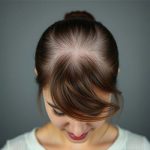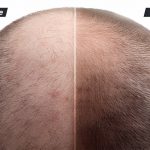Restore Your Confidence: Hair Transplant Solutions for Post-Weight Loss
Hair loss can be a distressing experience; for some, it may occur unexpectedly after a significant weight loss. While weight loss is often a positive milestone, it can sometimes lead to adverse side effects, such as hair thinning or shedding. This phenomenon can occur due to nutritional deficiencies, hormonal changes, or the body’s response to rapid weight loss. Fortunately, effective solutions are available to address this issue, one of the most popular being hair transplantation.
Hair transplantation has become a leading solution for individuals experiencing hair loss, including those with significant weight loss. In this brief, we explore the causes of hair loss after weight loss, how hair transplantation can address this issue, and what individuals can expect from the procedure.
Causes of Hair Loss After Weight Loss
Hair loss after weight loss can be attributed to several factors. These causes are often interconnected, and understanding them is crucial for addressing the problem effectively.
- Nutritional Deficiencies
When individuals undergo rapid or significant weight loss, mainly through restrictive diets or bariatric surgery, they may not be getting adequate nutrition. Hair health depends on essential vitamins and minerals such as iron, zinc, biotin, and protein. Deficiencies in these nutrients can weaken hair follicles, leading to increased hair shedding or thinning.
- Iron Deficiency: Iron is critical in producing red blood cells that carry oxygen to hair follicles. A lack of iron can result in hair loss, as hair follicles become deprived of the necessary oxygen and nutrients.
- Protein Deficiency: Hair is made of keratin, a protein, so protein deficiencies can significantly impact hair health. The body may prioritize vital functions over hair growth without sufficient protein intake, leading to hair thinning.
- Biotin and Zinc Deficiency: Both biotin and zinc are crucial for hair growth and the health of hair follicles. Deficiencies in these nutrients can weaken the hair shaft, leading to breakage and loss.
Visit: Hair Transplant in Honduras
- Telogen Effluvium
Telogen effluvium is a common form of temporary hair loss after a stressful event such as rapid weight loss. Hair follicles usually go through a growth cycle with three phases: the anagen (growth) phase, the catagen (transition) phase, and the telogen (resting) phase. Telogen effluvium occurs when many hair follicles enter the telogen phase prematurely, leading to significant shedding. Stress on the body, whether from sudden changes in diet, surgery, or rapid weight reduction, can trigger this condition.
- Hormonal Imbalances
Significant weight loss, primarily through surgical interventions like bariatric surgery, can cause hormonal changes that impact hair growth. Hormones such as thyroid hormones, estrogen, and androgens play a vital role in regulating hair growth. Fluctuations in these hormones, whether due to weight loss or other factors, can lead to hair thinning or shedding.
- Thyroid Dysfunction: The thyroid gland regulates metabolism, and its dysfunction can lead to hair loss. Both hyperthyroidism and hypothyroidism can contribute to hair thinning, particularly after drastic weight changes.
- Androgenic Influence: Changes in androgens (male hormones present in both men and women) can lead to conditions such as androgenetic alopecia, which results in pattern hair loss. Weight loss may sometimes exacerbate androgenic effects, contributing to hair thinning.
Hair Transplantation: An Effective Solution
Hair transplantation is a proven method to restore hair density in individuals experiencing hair loss due to weight loss or other factors. It involves moving healthy hair follicles from a donor area (typically the back or sides of the scalp) to regions with thinning or balding.
Hair transplant techniques have evolved significantly over the years, offering practical solutions for hair loss with natural-looking results. Here are the most prominent hair transplant techniques:
- Follicular Unit Transplantation (FUT)
Description: Also known as the “strip method,” FUT involves removing a strip of skin from the back or sides of the scalp, from which hair follicles are harvested. These follicles are then transplanted into the thinning or balding areas of the scalp.
Advantages:
- Can cover larger areas of baldness in a single session.
- More follicles can be harvested at once.
Disadvantages:
- Leaves a linear scar at the donor site.
- Longer recovery time compared to other methods.
- Pain full procedure.
- Follicular Unit Extraction (FUE)
Description: FUE involves extracting individual hair follicles from the donor area (usually the back of the head) using tiny circular incisions. These follicles are then transplanted to the balding areas.
Advantages:
- Minimally invasive with no linear scar.
- Shorter recovery time.
- More natural-looking results due to individual follicle placement.
Disadvantages:
- Can be more time-consuming.
- Generally more expensive than FUT.
- Create incisions and pain full technique.
- Requires shaving the donor area in most cases.
- Direct Hair Implantation (DHI)
Description: DHI is the most advanced hair transplant technique. In this technique, the extracted follicles are implanted directly into the scalp using a specialized tool called a “DHI Implanter.” This tool gives more precision and control over the hair’s angle, depth, and direction.
Advantages:
- No need to create incisions in the recipient area.
- Faster recovery time with less scarring.
- High precision in implantation, leading to natural-looking results.
Disadvantages:
Generally, it is slightly more expensive than FUE and FUT.
Requires specialized training, so only certified DHI surgeons perform the surgery.
- Robotic Hair Transplantation (ARTAS)
Description: This technique uses robotic technology to assist in FUE hair transplantation. The ARTAS system identifies the best follicles for extraction and helps make precise incisions for implantation.
Advantages:
- Increased accuracy.
- Reduces the risk of human error.
Disadvantages:
- Very high cost due to the use of advanced technology.
- Limited availability as only specific clinics have ARTAS systems.
- Stem Cell Hair Transplant (Under Research)
Description: A relatively new and experimental technique, stem cell hair transplants involve harvesting stem cells from the patient’s own body. These cells are then cultured in a lab to generate new hair follicles implanted back into the scalp to promote hair growth.
Advantages:
- Potential to regenerate hair more effectively.
- Might not require as many donor follicles.
Disadvantages:
- Still under research and not widely available.
- More expensive due to its experimental nature.
Benefits of Hair Transplantation After Weight Loss
Hair transplantation offers several benefits for individuals who have experienced hair loss following weight loss:
- Natural-Looking Results
One of the primary advantages of hair transplantation is that it provides natural-looking results. Because the transplanted hair is taken from the individual’s scalp, it matches their natural hair’s texture, color, and growth pattern. As the hair grows, it blends seamlessly with the existing hair.
- Permanent Solution
Unlike temporary treatments for hair loss, such as medications or topical treatments, hair transplantation provides a permanent solution. Once the transplanted hair follicles take root and grow, they will continue to produce hair for a lifetime. This makes hair transplantation a long-term investment in restoring confidence and appearance.
- Low Maintenance
Transplanted hair requires the same care as natural hair, meaning no unique products or treatments are needed post-procedure. Once the hair has fully grown, individuals can wash, style, and cut it as usual, with no additional upkeep required.
- Boost in Confidence
Hair loss can have a significant impact on self-esteem and confidence. Hair transplantation helps individuals regain confidence and improve their overall quality of life by restoring hair density and fullness. For many, hair transplantation’s emotional and psychological benefits are as crucial as the physical transformation.
The Hair Transplantation Process
The hair transplantation process typically involves several steps, from the initial consultation to post-operative care.
- Initial Consultation
During the consultation, the surgeon will assess the individual’s hair loss pattern, examine the donor area, and discuss the procedure’s goals. This is also an opportunity to determine which transplantation technique (FUT or FUE) is most appropriate for the individual’s needs.
- Procedure
On the day of the procedure, the surgeon will begin by administering local anesthesia to the donor and recipient areas to ensure comfort. In FUT, a strip of scalp will be removed, and in FUE, individual follicles will be extracted. The surgeon will then create tiny incisions in the recipient area and carefully place the follicles to mimic natural hair growth patterns.
- Recovery
Post-surgery, the scalp may be slightly swollen or tender, and the individual will need to follow the surgeon’s aftercare instructions, which may include avoiding strenuous activity for a few days. Within a few weeks, the transplanted hair may fall out, a normal part of the process known as “shock loss.” New hair will begin to grow within 3 to 6 months, with full results visible in about 12 months.
Visit Hair Transplant for Overseas Clients
Considerations Before Hair Transplantation
Before opting for hair transplantation, individuals need to consider the following:
- Realistic Expectations
While hair transplantation can significantly improve hair density, realistic expectations are essential. The amount of donor hair available, the extent of hair loss, and the individual’s hair characteristics (such as thickness and curl) will all impact the final results.
- Cost
Hair transplantation is a cosmetic procedure, and its cost can vary depending on factors such as the surgeon’s experience, the technique used, and the number of grafts required. Individuals should also consider the long-term results, making it a worthwhile investment for many.
Hair loss after significant weight loss is a common issue caused by factors such as nutritional deficiencies, hormonal changes, and stress on the body. Fortunately, hair transplantation offers a practical and permanent solution for restoring hair density and confidence. By understanding the causes of hair loss and considering hair transplantation as a treatment option, individuals can achieve lasting results that enhance their appearance and self-esteem.






